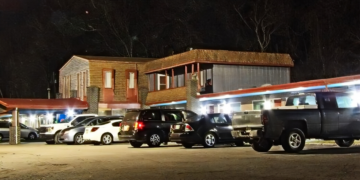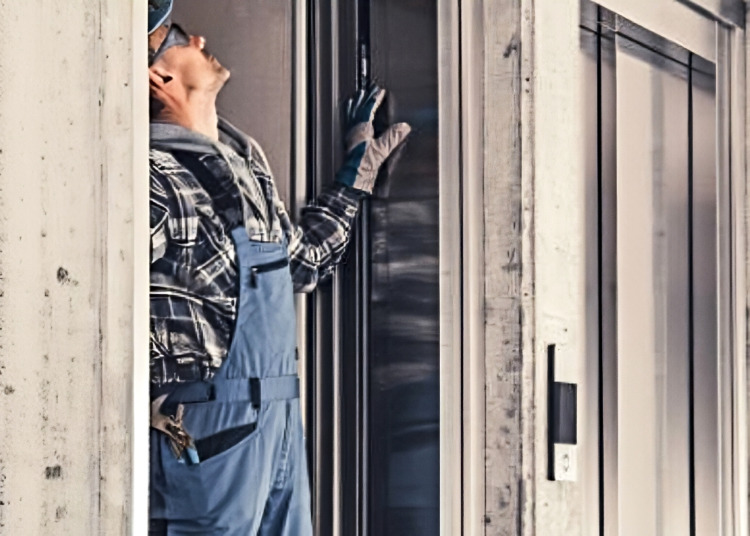As seniors and disabled residents at Buckeye Towers enter their sixth week trapped on upper floors, the region’s elevator problems continue to mount and now Portsmouth’s new City Building is staring down a 30-week wait for repairs.
According to industry experts, what’s happening in Scioto County is a symptom of a much larger crisis.
Buckeye Towers Isn’t Alone — Elevator Delays Are Stretching Across the County
Residents at Buckeye Towers have been homebound for more than a month, relying on firefighters and volunteers for essential deliveries while both elevators remain out of service.
But this isn’t an isolated failure.
- The Scioto County Courthouse elevator was down for months earlier this year.
- Now the new Portsmouth City Building in the former Fifth Third Bank is facing a 30-week rebuild time, Commissioner Scottie Powell confirmed.
“Their lead time to rebuild is over 30 weeks,” Powell said.
“There was nothing we could do to speed up the courthouse repairs. We were completely at the mercy of the service provider.”
And Buckeye Towers’ management says they’re in the same position.
Buckeye Towers: Management Says Even Tested Parts Failed on Arrival
Property Manager Shavaughn Metzger detailed the setbacks:
- A replacement drive for Elevator #1 was successfully tested in Maryland before shipping.
- After installation attempts in New Boston, engineers found it wouldn’t sync with the system.
- Additional faults were discovered, forcing the entire drive to be shipped back to Maryland for repair.
- Once those repairs are complete, Metzger expects a more accurate restoration timeline.
- She has also requested pricing to modernize the second elevator, hoping to avoid future failures.
- Metzger expressed gratitude to residents, fire crews, churches, and volunteers helping carry supplies to stranded tenants.
But the technical issues at Buckeye Towers — and the massive delays across Portsmouth — now have a clear explanation from someone who knows the national situation better than anyone.
Otis: “This Is Happening Everywhere — Millions of Elevators Are Aging Out at Once”
Scioto County Daily News spoke with Ed Jacovino of Otis, the world’s leading elevator manufacturer and service provider. While Otis is not the servicer for Buckeye Towers, Jacovino said what is happening here is exactly what the industry expected — and feared.
“This trend you’re seeing with delays on older elevators in Portsmouth is happening everywhere in the country,” Jacovino said.
“We’ve seen it really pick up in the last few years.”
The 20-Year Danger Zone
Jacovino said elevators follow a predictable lifecycle:
- Runs reliably for many years
- At around 20 years, major moving parts begin to fail
- This is when Otis — and any elevator service company — starts urging modernization
“Modernization,” he explained, can range from replacing key components to nearly rebuilding the entire system:
“What it does is bring the elevator up to code and make sure the critical components aren’t obsolete. That’s exactly the problem you’re seeing — spare parts and replacement parts aren’t available or no longer manufactured.”
Jacovino compared aging elevators to aging vehicles:
“Think of it like a car — it runs great for a while, but eventually the cost of repairs and downtime outweighs the reliability.”
Why Repairs Take So Long: Obsolete Parts, Dead Manufacturers, and Machine Shops
Jacovino explained the exact scenario Buckeye Towers is experiencing:
- Many older elevators were built by companies that no longer exist.
- Their parts departments are gone.
- Replacement pieces often must be taken out of the elevator, shipped to a machine shop, recreated from scratch, and shipped back.
- In some cases, old molds or dies exist — but the part still has to be manufactured from the ground up.
- Even when parts do exist in a warehouse, diagnosis + shipping + installation + testing can take significant time.
“Unfortunately, the process is slow. Our teams are acutely aware of the impact when we’re the service provider and there’s no elevator working in a building.”
Preventing the Next Crisis: What Buildings Should Be Doing
Jacovino says the most important step is planned elevator modernization.
What modernization accomplishes:
- Replaces obsolete components
- Brings the system up to current code
- Reduces downtime and cost
- Prevents catastrophic failures like the one at Buckeye Towers
- Avoids multi-week or multi-month outages
How it works:
- Building owners get an assessment and cost estimate
- Work is scheduled in phases
- In multi-elevator buildings, modernization is done one elevator at a time, leaving at least one in service
Jacovino said Otis even offers payment spacing to match building budgets.
The Global Scope: 8 Million Elevators in the Red Zone — Soon to Be 16 Million
Jacovino said the elevator industry is now at a historic tipping point:
- There are 22 million elevators worldwide
- 8 million of them — more than one-third — are already in the modernization zone
- That number will double to 16 million within a decade
More people are moving to cities. More buildings are going up. And the infrastructure that serves seniors, workers, and disabled people is hitting the end of its designed life.
“People need elevators,” Jacovino said. “What you’re seeing in Portsmouth is happening everywhere.”
Local Officials Still Limited
Some residents have demanded intervention from the Commissioners or New Boston Council, but Powell reiterated the legal reality:
- Only the contracted service company can touch a building’s elevator
- Local governments can’t force manufacturers to speed up
- State and federal agencies can’t conjure parts that don’t exist
- Fire and EMS can assist residents — but they can’t repair equipment
Whether it’s Buckeye Towers, the courthouse, or the city building, everyone is stuck waiting on the same broken national system.
Meanwhile, Residents Are Still Trapped
One Buckeye Towers tenant summed up the human toll:
“I haven’t been downstairs in 34 days. Holidays are passing some of us by.”
Until replacement drives return from Maryland — and until modernization becomes a priority instead of a luxury — thousands of people across America will continue facing the same nightmare.






















































































